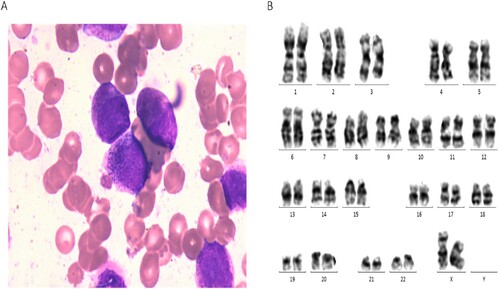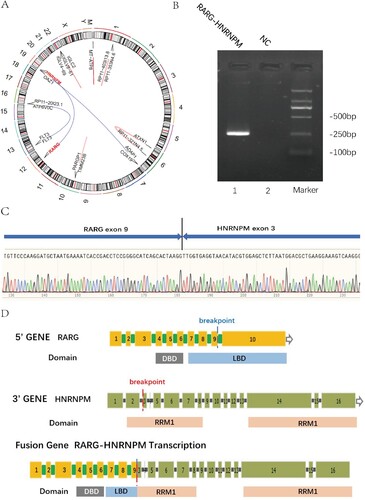Figures & data
Figure 1. Morphology, cytogenetic and molecular analysis of the RARG-HNRNPM fusion gene. (A) BM smear morphology; (B) Chromosome analysis of the patient.

Figure 2. Detection of the RARG/HNRNPM fusion. (A) The circros visualization of the reciprocal RARG/HNRNPM fusion on chromosome. (B) Picture of the amplified fragment on agarose gel. Marker: DNA 2K marker; lane 1: PCR amplicons of RARG-HNRNPM patient; lane 2: NC negative control. (C) Sanger sequencing for RARG-HNRNPM fusion point surrounding base pairs. Verified by NCBI blast, it completely aligned with RARG exon9 and HNRNPM exon3. (D) Overview of the chimeric fusion diagram: the fusion gene structure contained RARG whole DBD (90–155 amino acids), which coincided with two zinc finger motifs (90–110 amino acids and 126–150 amino acids) and two main RNA-recognition motifs (RRMs) of HNRNPM gene.

Supplemental Material
Download MS Word (13.5 KB)Data availability statement
RNA-seq data were available in NCBI with accession number PRJNA719216 (https://submit.ncbi.nlm.nih.gov/subs/bioproject/SUB9406085/overview). All data will be shared with qualified scientific and medical researchers, upon the researcher’s request, as necessary for conducting legitimate research.
